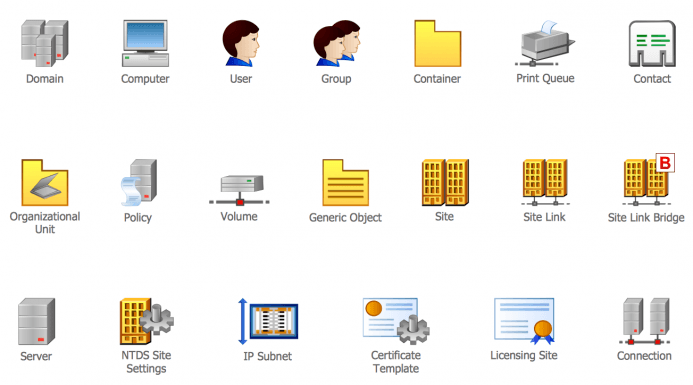Active Directory (AD) is a Microsoft product that consists of several services that run on Windows Server to manage permissions and access to networked resources. Active Directory stores data as objects. An object is a single element, such as a user, group, application or device, such as a printer.
What is Active Directory?
Active Directory Domain Services is Microsoft’s Directory Server. It provides authentication and authorization mechanisms as well as a framework within which other related services can be deployed (AD Certificate Services, AD Federated Services, etc). It is an LDAP compliant database that contains objects. The most commonly used objects are users, computers, and groups. These objects can be organized into organizational units (OUs) by any number of logical or business needs. Group Policy Objects (GPOs) can then be linked to OUs to centralize the settings for various users or computers across an organization.
When people say “Active Directory” they typically are referring to “Active Directory Domain Services.” It is important to note that there are other Active Directory roles/products such as Certificate Services, Federation Services, Lightweight Directory Services, Rights Management Services, etc. This answer refers specifically to Active Directory Domain Services.
What is a domain and what is a forest?
A forest is a security boundary. Objects in separate forests are not able to interact with each other unless the administrators of each separate forest create trust between them. For example, an Enterprise Administrator account for domain1.com, which is normally the most privileged account of a forest, will have, no permissions at all in a second forest named domain2.com, even if those forests exist within the same LAN, unless there is a trust in place.
If you have multiple disjoint business units or have the need for separate security boundaries, you need multiple forests.
A domain is a management boundary. Domains are part of a forest. The first domain in a forest is known as the forest root domain. In many small and medium organizations (and even some large ones), you will only find a single domain in a single forest. The forest root domain defines the default namespace for the forest. For example, if the first domain in a new forest is named- domain1.com, then that is the forest root domain. If you have a business need for a child domain, for example – a branch office in Chicago, you might name the child domain chi. The FQDN of the child domain would be chi.domain1.com. You can see that the child domain’s name was prepended forest root domain’s name. This is typically how it works. You can have disjoint namespaces in the same forest, but that’s a whole separate can of worms for a different time.
In most cases, you’ll want to try and do everything possible to have a single AD domain. It simplifies management, and modern versions of AD make it very easy to delegate control based on OU, which lessens the need for child domains.

